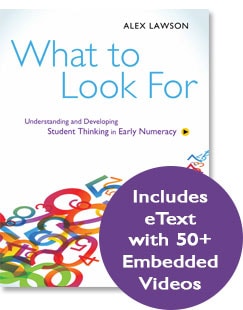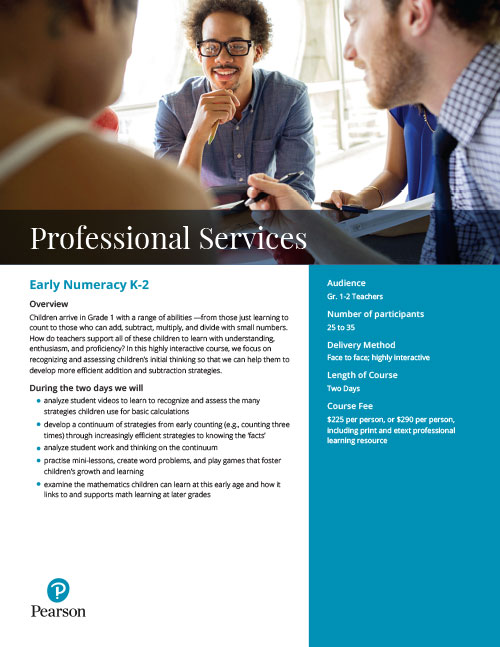
Early Numeracy K-2
What to Look For: Student Thinking in Early Numeracy
Course Description
Children arrive in Grade 1 with a range of abilities —from those just learning to count to those who can add, subtract, multiply, and divide with small numbers. How do teachers support all of these children to learn with understanding, enthusiasm, and proficiency? In this highly interactive course, we focus on recognizing and assessing children’s initial thinking so that we can help them to develop more efficient addition and subtraction strategies.
During the two days we will
- analyze student videos to learn to recognize and assess the many strategies children use for basic calculations
- develop a continuum of strategies from early counting (e.g., counting three times) through increasingly efficient strategies to knowing the ‘facts’
- analyze student work and thinking on the continuum
- practise mini-lessons, create word problems, and play games that foster children’s growth and learning
- examine the mathematics children can learn at this early age and how it links to and supports math learning at later grades
Audience
Gr. 1-2 Teachers
Two-Day Institute Overview
In advance of the first day, interview 5 students by posing these two word problems:
5 +7 = __ 14-6 = ___
Record your observations and, if possible, bring student work samples to Day 1.
DAY 1
- Address concerns and questions about mathematics. (Why aren’t we focusing on facts? What should children be able to do in Grade 1? Grade 2?)
- Develop the Continuum of Addition and Subtraction strategies
- Identify addition and subtraction key ideas and strategies
- Use participants’ samples to assess where students are on the continuum
DAY 2
- Learn more about the underlying mathematics
- Use and teach with:
- Mini-lesson strings
- Word problems
- Games
- Complete the Continuum with learning the “facts” and alternative algorithms
Outcomes
- Develop a stronger understanding of how young children learn to add and subtract
- Appreciate how developing a range of strategies lays the groundwork for learning more complex mathematics
- Create a learning environment that engages and extends students’ mathematical thinking
Course Fee and Structure
$225 per person, 25 to 35 participants or $290 per person, including print and etext professional learning resource
Delivery Method
Face to face; highly interactive
Related Resources

What to Look For: Understanding and Developing Student Thinking in Early Numeracy (Print plus eText)
Author: Alex Lawson
Copyright: 2015

